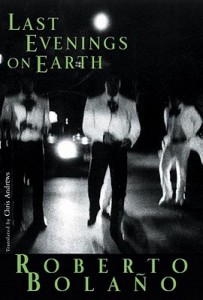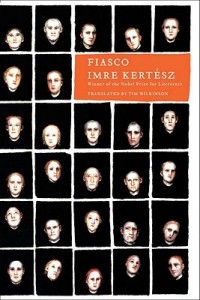Stretching Time
Coetzee does a beautiful job of stretching time in the scene when the narrator is hunting the ram. He writes, “His hooves touch ice with a click, his jaw stops in mid-motion, we gaze at each other.” Second by second I was with the magistrate as he met eyes with this ram. It was one of the moments when I was most engaged in the novel. He goes on to write, “He chews again, a single scythe of the jaws, and stops.” Word by slow word and phrase by comma-separated phrase I was completely trapped in this moment and waiting to see what happened next. By ending the sentence with the word “stops” Coetzee both emphasizes the stop and cuts the paragraph. The sentences that follow are about the magistrate’s train of thought as he himself is “suspended in immobility” but these sentences are longer and less focused and my own train of thought started to wander. I found myself longing for that heartbeat by heartbeat pace of his description of the ram.
Practicing Concision
There are other times in this novel where Coetzee conveys a lot of information with very little language. When speaking of the barbarian girl before he decides to return her to her people he says, “I have not entered her.” The sentences that follow are more graphic but somehow they say less than this one sentence. The magistrate could “enter” her—he apparently has the power and freedom to do as he wishes. The mere fact that this sentence mentions nothing about her willingness or interest or anything really besides her existence shows the character’s complete disregard for any of that. Entering her or not is one more decision he will make in his day. At this point in the novel it is no more and no less. Except that she is the only one he seems to have not “entered.” He is saying that she is different in that she is around and available to him and he has touched her intimately, for some unknown reason she is different.
Later Coetzee writes that the magistrate (who is now merely a prisoner) “cannot be sure that the roar (of the mob) is not simply in my eardrums.” This uncertainty on the part of the magistrate as to his own senses conveys a very different man from who he was at the beginning of the book. Coetzee goes on to write about the torment he is enduring and how he has to “keep myself from screaming, tearing my clothes, clawing my flesh” but somehow although this language is more descriptive and I would expect the first person experience of pain to be more compelling, this says less about the character than his inability to accurately gauge the world around him.
In Polska, 1994, I worked on how to convey to the reader both the nature of the teenaged character in all of her angst and also the nature of her experiences without overdoing it. I was interested in how to convey Magda’s experience and her emotions in a way that the reader can engage with and not just witness and in a way that gives some insight into her as a character perhaps beyond the insight she has in herself. With a first person narrator, it is difficult, but Coetzee did it and did it well.
If this review made you want to read the book, pick up a copy of Waiting for the Barbarians from Bookshop.org. Your purchase keeps indie booksellers in business and I receive a commission.

